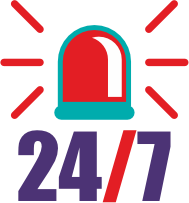Categories
What Is Down Syndrome? A Calm, Practical Guide for Families
Sep 08, 2025
What it is—and what it isn’t
Down syndrome happens when a baby has extra chromosome 21 material in their cells. That extra copy can affect development and appearance, and it raises the chance of certain medical issues. It does not decide your child’s personality, potential, or the love they bring home. Use person-first language: a child with Down syndrome.
How it’s found: screening and diagnostic tests
During pregnancy, screening (ultrasound markers and blood tests, or cell-free DNA/NIPT) estimates chance. A high-chance screen means you can consider a diagnostic test—CVS (first trimester) or amniocentesis (second trimester)—which looks at chromosomes and gives a yes/no answer.
After birth, doctors may suspect the condition by features or low muscle tone and confirm with a chromosome test (karyotype). Your team will explain timing, safety, and choices at each step.
The first checks after birth: a short, known list
Clarity lowers fear. Most babies benefit from:
· Heart: early echocardiogram (some have heart differences that are treatable).
· Hearing & vision: newborn hearing screen and planned rechecks; eye exam in the first year.
· Thyroid: routine blood tests (thyroid differences are more common).
· Growth & feeding: support with latching, bottle choice, and weight tracking on suitable charts.
· Sleep & breathing: watch for snoring or pauses; assess for sleep apnea if needed.
These checks are predictable; your team will schedule them.
Early intervention: skills start small and add up
Therapy works best when it fits daily life.
· Physiotherapy builds core strength and posture so rolling, sitting, and walking come easier.
· Speech-language therapy starts early for feeding and later for sounds, words, and signs.
· Occupational therapy supports fine-motor skills, play, and routines like dressing and brushing.
Practice happens in ordinary moments—bath time, mealtimes, floor play—so gains stick.
Daily life: routines that help
Children with Down syndrome learn well with steady routines and visual cues. Keep days predictable, break tasks into steps, and celebrate the next small milestone, not a distant chart. Preschool, playgroups, and inclusive classrooms build language, friendships, and confidence. Family, siblings, and local parent networks matter—share what works at home with your care team and teachers.
When to call your care team
Call if feeding is hard or tiring, breathing is noisy or laboured, weight gain slows, constipation persists, hearing or vision seems reduced, eyes stay red or watery, or sleep is very restless. Early review prevents small issues from becoming big ones.
Keeping the plan together
One calendar and one folder help: appointment dates, test results, therapy goals, and a short “about me” page (likes, calming tricks, signs used). Bring this to visits. A tidy plan makes handoffs smooth and keeps everyone—family, therapists, and doctors—aligned.
Conclusion
When you ask, “Whatis Down syndrome?”, the most helpful answer is a path you can follow. Define the condition clearly, choose the right test for certainty, complete the early checks, and weave therapy into everyday life. Small, steady steps add up to strong skills and happy routines. At Rainbow Children’s Hospitals, pediatricians, cardiologists, audiology/vision teams, and therapists work together so your family gets one coordinated plan—and a team that stays with you at every milestone.











